9 Community order snapshots
9.1 Overview7
Offenders on community orders are made up of offenders recently released from prison or home detention sentences. Prisoners on prison sentences of two years or less are automatically released after serving half of their imposed sentence length (often with pre-determined court order release conditions). Prisoners on sentences of more than two years are released at the discretion of the New Zealand Parole Board between their parole eligibility date and no later than their sentence end date. Parole eligibility date is a minimum of one third of the imposed sentence, but the court may impose a longer minimum non-parole period. The New Zealand Parole Board must impose standard conditions when releasing a prisoner and may also impose special conditions. Since 2004, courts have been able to impose an Extended Supervision Order of up to 10 years on a person who has completed a prison sentence for a sexual offence against a child.
9.2 Overall trend
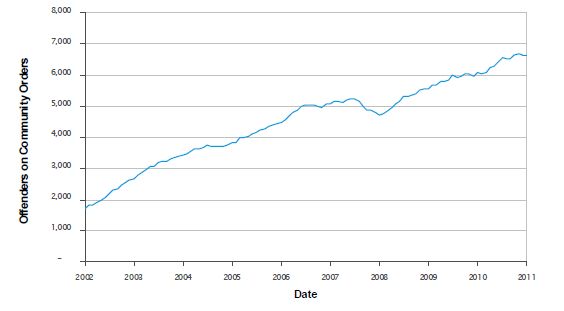
For more details see: Data Spreadsheet
The statistics in the figure above start at 2002, the date of a major reform of parole with the introduction of the Sentencing Act 2002. This included the introduction of the 'Release on Conditions' order.
The Sentencing Amendment Act 2004 later provided for longer durations of community orders. The amendment resulted in an increase in the average period of community orders from approximately 150 days to 250 days, and a corresponding fall in short-term prison sentences.
9.3 Order type
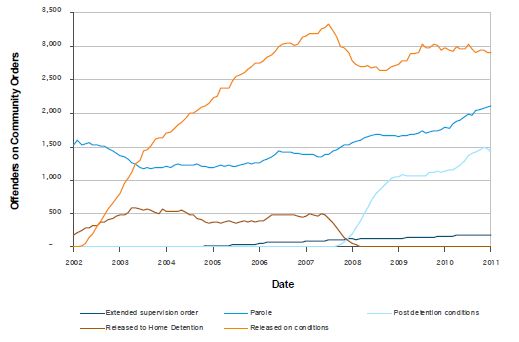
For more details see: Data Spreadsheet, Major management category - 12 Data definitions and groupings
The information above reflects legislative changes. For example
- Release to Home Detention was removed as a parole board order type in 2007.
- Parole with full residential restrictions was introduced in 2007.
- Release on Conditions was introduced in 2002 for short term sentences.
- In 2004 Release on Conditions was extended to provide for management up to six months beyond the prison sentence expiry date.
- In 2007 Home Detention sentences were introduced diverting some short-termers from prison and subsequent release on conditions orders.
- After 2007 as people exited the new Home Detention sentences there has been a build up of Post (HD) Detention conditions.
9.4 Gender
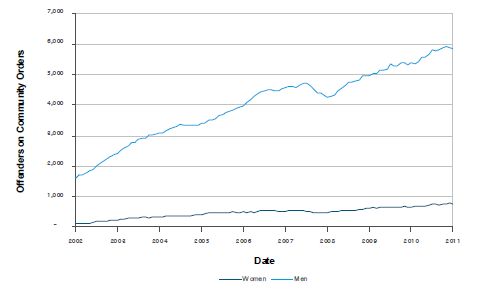
For more details see: Data Spreadsheet, Gender - 12 Data definitions and groupings
The numbers of both men and women with orders imposed have increased markedly over time.
9.5 Age
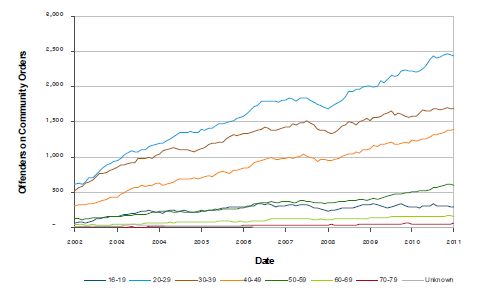
For more details see: Data Spreadsheet, Age - 12 Data definitions and groupings
The number of offenders aged between 20 and 59 who have had an order imposed has increased noticeably since 2002. The number of younger offenders (aged 16-19) who have had an order imposed has been variable over this time period.
9.6 Ethnicity
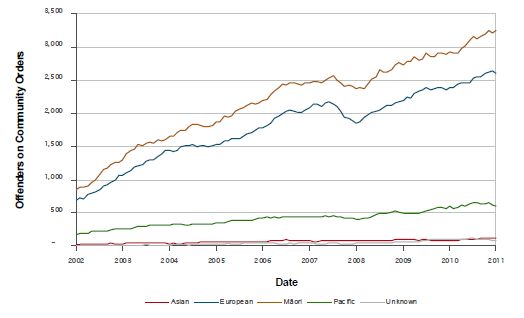
For more details see: Data Spreadsheet, Ethnicity - 12 Data definitions and groupings
9.7 Offence group
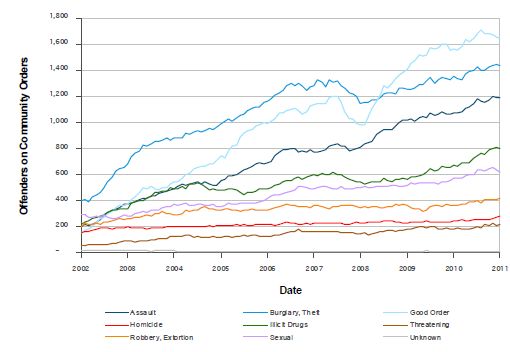
For more details see: Data Spreadsheet, Offence grouping - 12 Data definitions and groupings
There has been a marked change in the makeup of offences committed by offenders who have had an order imposed. For example, good order offences have increased at a higher rate over the last decade. The number of offenders with assault, burglary, theft, sexual and drug offences has also increased.
9.8 Order type and gender on 30 June 2011
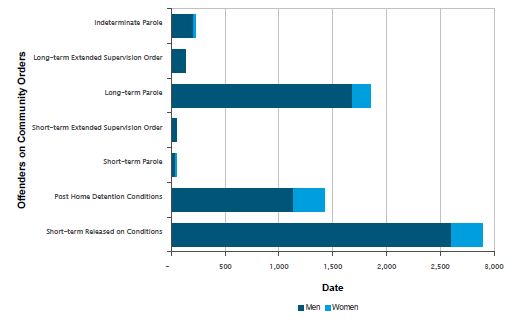
For more details see: Data Spreadsheet, Gender, Major management category - 12 Data definitions and groupings
The figure above shows the order type imposed by gender, as well as the length of the imposed order.
9.9 Order type and ethnicity on 30 June 2011
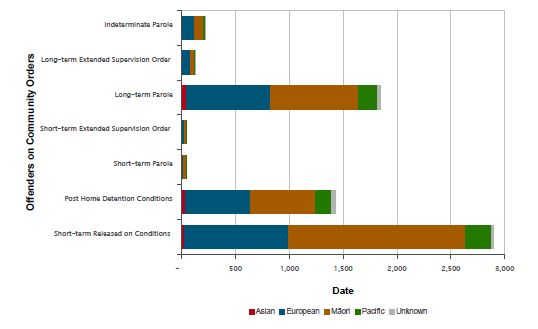
For more details see: Data Spreadsheet, Ethnicity Major management category - 12 Data definitions and groupings
9.10 Order type and age on 30 June 2011
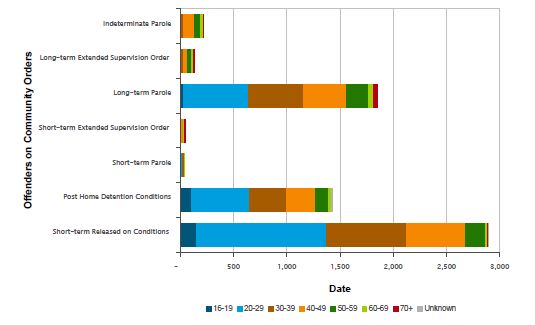
For more details see: Data Spreadsheet, Age, Major management category - 12 Data definitions and groupings
9.11 Order type and offence group on 30 June 2011
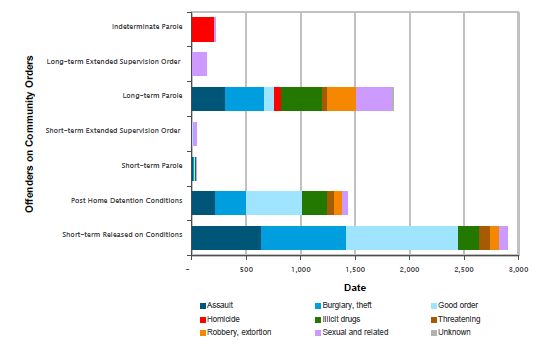
For more details see: Data Spreadsheet, Offence grouping, Major management category - 12 Data definitions and groupings
The mix of offence groups for community order varies according to the term of the imposed prison sentence.
7The Offender Volumes Report 2009 described a management grouping of 'Prison release ordered' offenders. This section of the current report combines the old 'Prison release orders' with post Home detention release conditions and calls them 'Community orders'.

